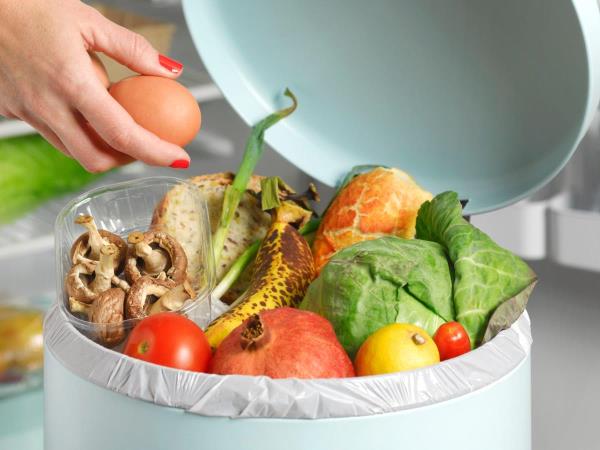- Apple Peel – a Natural Shield for the Brain and Lungs
If you are one of those who peel an apple before eating it, we must stop you right away. The apple peel contains the highest amount of antioxidants, with quercetin being the standout. This substance is a natural plant pigment that has a strong anti-inflammatory effect, particularly protecting the lungs and brain.
In a study published in the scientific journal Neuropharmacology, it was found that quercetin slows down the degeneration of brain cells and reduces the risk of developing Alzheimer's disease. It also reduces symptoms of asthma and allergies, acting as a natural antihistamine.
Additionally, apple peel contains three times more fiber than the fruit itself. For example, a medium-sized apple contains about 4 grams of fiber – more than half of which is in the peel.
- Swiss Chard Stems – a Treasure Trove for Body Regeneration
Swiss chard is often prepared as a side dish, but most people cut off and discard its thick stems. Mistake! These stems are rich in glutamine, a type of amino acid – the basic building blocks of proteins. Glutamine is not just a passing trend but a necessary substance that helps the body in wound healing, post-operative recovery, and immune system strengthening.
In traditional medicine, Swiss chard stems were often used for compresses in inflammations or minor injuries, as they are believed to have pain-relieving and regenerative effects. If you quickly saut{-15447} the Swiss chard stem and add it to a salad, you will experience crunchiness, and the taste will surprise you – it is not bitter but gently earthy and sweet.
- Orange Peel – More Effective than Some Medications
Do you also roll your eyes when grandma grates orange zest into a cake? Perhaps she is more right than you think. Orange peel hides flavonoids, natural substances that, among other effects, lower bad cholesterol (LDL). According to a study published in the Journal of Agricultural and Food Chemistry, these flavonoids have an even stronger effect on cholesterol than some medications like statins.
The peel also contains essential oils that have antimicrobial and antiviral properties. For optimal use of the peel, it is recommended to wash the orange in a vinegar and water solution in a 1:1 ratio beforehand to remove pesticide and wax residues. You can then grate the orange peel into yogurt, cereals, or dry it for making homemade cold relief tea.
- Beet Greens – A Green Treasure Once Revered More Than the Root
Nowadays, we mainly use the beetroot, but in ancient times, its leaves were more appreciated. And for a reason. These dark green leaves, slightly resembling Swiss chard, are full of iron, calcium, fiber, and vitamins A and K.
One serving (about 100 grams) of beet greens contains a whopping 500% of the daily recommended amount of vitamin K, which plays a key role in blood clotting and bone health. Moreover, they contain more iron than spinach, making them an excellent choice for those struggling with anemia.
Beet greens are also mild natural liver detoxifiers and are commonly used in folk medicine to support digestion.
- Turnip Greens – Overlooked Treasure for Blood Pressure and Heart
When you buy turnips, you probably peel and bake them, discarding the leaves. However, these leaves hide the most benefits. According to the National Institutes of Health (NIH), turnip greens contain high levels of potassium, which helps regulate blood pressure.
Vitamin K in turnip greens protects the heart, iron aids in red blood cell formation. Another interesting fact – one serving of turnip greens provides 130% of the daily requirement for vitamin A, crucial for healthy vision and a strong immune system.
Preparing turnip greens is simple: you can saut{-15447} them with olive oil and garlic or add them to soup. The taste? Something between Swiss chard, broccoli, and slightly spicy turnip – truly unique.
- Potato Peel – Undervalued Fiber Source
Although most people still peel potatoes, science teaches us otherwise. The potato peel contains more nutrients than the white flesh. Among them, fiber, vitamin C, and iron are prominent. One medium-sized potato skin contains about 2 grams of fiber, which is nearly 10% of the daily requirement.
It also contains vitamins B6 and B3, crucial for metabolism and nerve function. It even provides magnesium and potassium, positively impacting muscles and blood pressure.
It is best to thoroughly scrub the potato under running water before baking or cooking it with the skin. This way, you retain almost all the nutrients that would be lost with peeling.
A Treasure You Already Have at Home – Just Use it Right
When we think about how many beneficial nutrients we discard daily – out of ignorance or habit – we can legitimately worry. But the good news is that with small changes, we can do a lot for our health. By incorporating apple peels, orange peels, and beet greens into your diet for just one week, you can increase your fiber intake by up to 30%, vitamin K by 40%, and iron by 25% compared to discarding these parts.
Remember: nature has no waste. Every part has a purpose. Many plant parts we discard today were once considered essential remedies in folk medicine – and not without reason.
So, the next time you prepare a meal, take a good look at the cutting board before throwing anything away. Your next shield against diseases might just lay there, hidden in a humble peel or forgotten leaf.










 Would you like to be informed about news on the website?
Would you like to be informed about news on the website?

